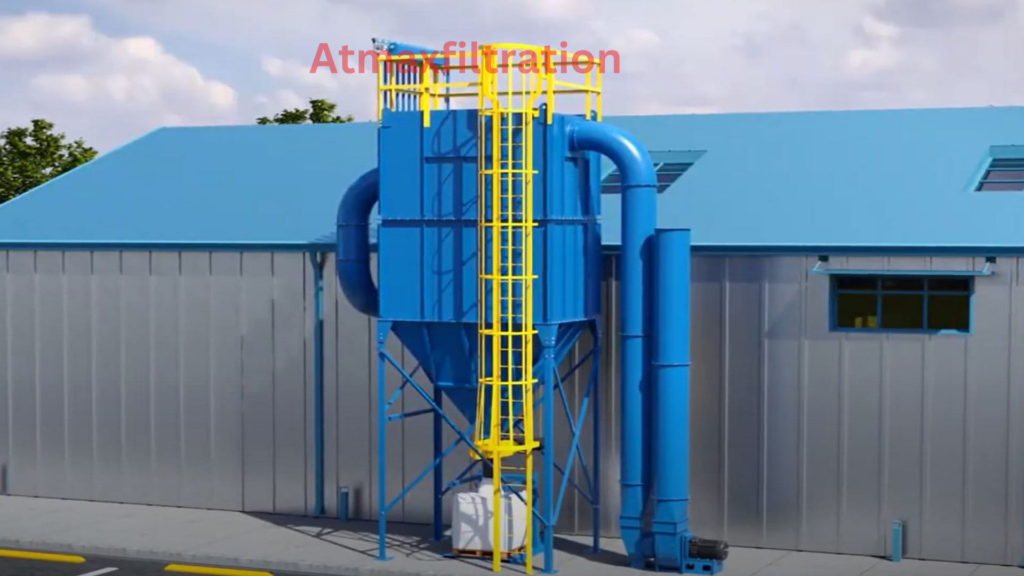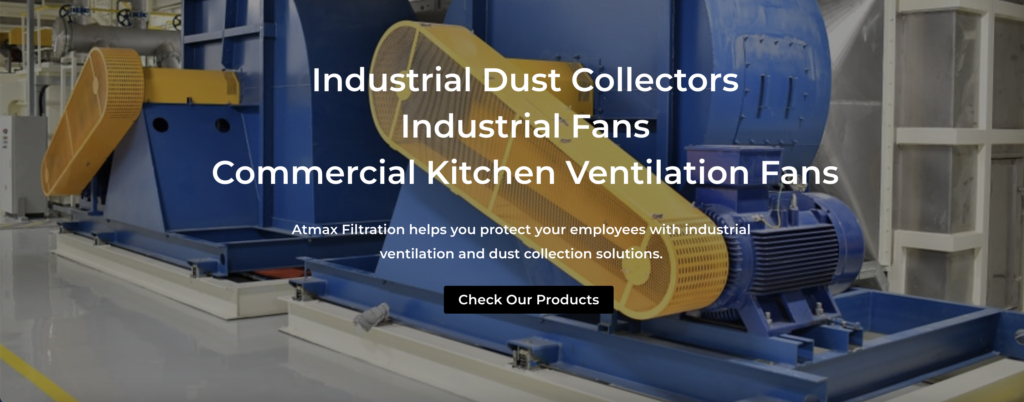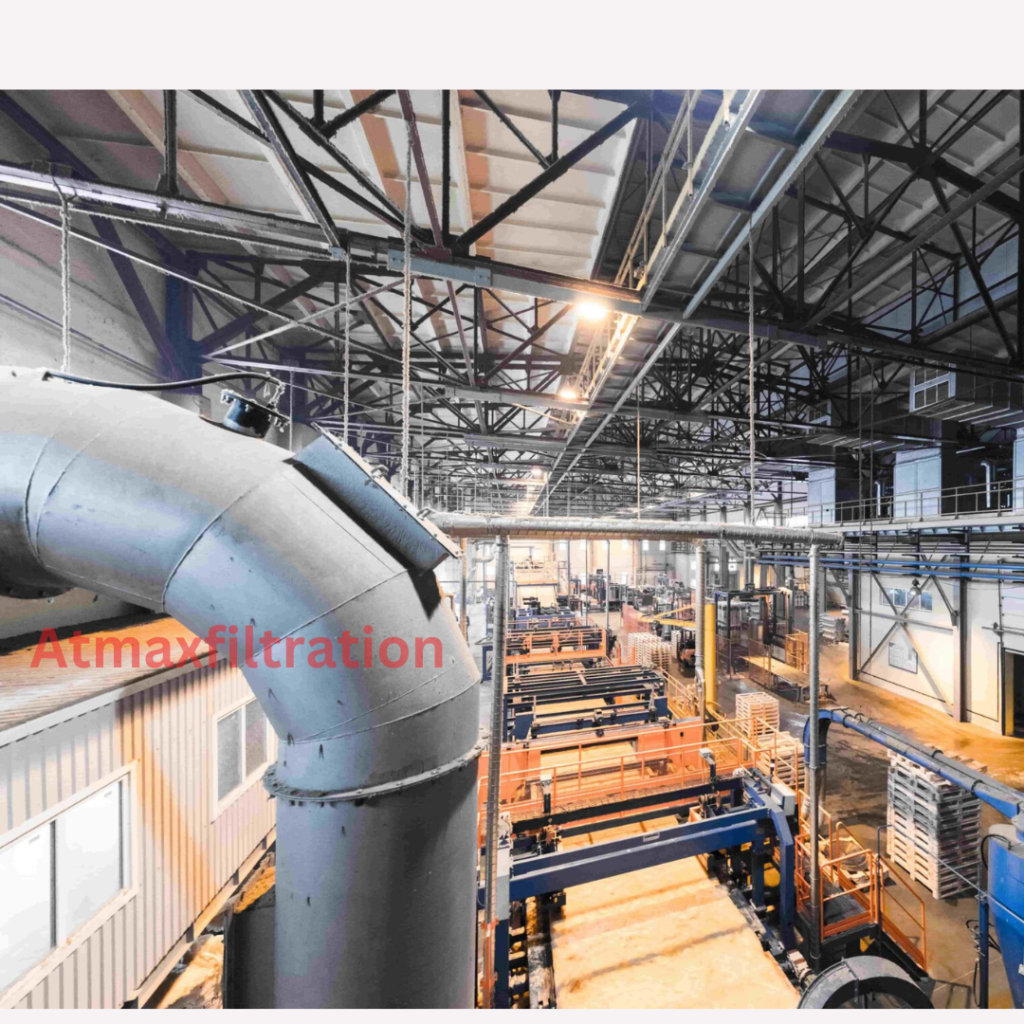Baghouses are essential industrial air pollution control devices that filter dust and particulate matter from the air. They are used in a wide variety of industries, including manufacturing, power generation, and mining. Baghouses play a vital role in protecting human health and the environment by preventing the release of harmful pollutants into the air.
In this blog post, we will take a comprehensive look at how baghouses work. We will discuss the different components of a baghouse, the various types of baghouses, and the different ways of how a baghouse dust collector works.
What is a baghouse dust collection system?

A baghouse dust collection system is an industrial air pollution control device designed to capture and remove particulate matter (dust and particles) from exhaust gases in various manufacturing and processing operations. It consists of several key components, including a dust collection chamber, filter bags, a clean air plenum, a fan, and an exhaust stack.
Components of baghouse dust collector
A baghouse dust collector comprises several key components that work together to capture and remove particulate matter from exhaust gases. These components are crucial for the efficient operation of the system. Here are the main components of a industrial baghouse dust collector:
- Dust Collection Chamber: The dust collection chamber is the initial entry point for polluted air. It is a large enclosure where dust-laden air is collected before it passes through the filter bags. This chamber may include an inlet duct, which directs the contaminated air into the system.
- Filter Bags (Filter Media): Filter bags are the primary filtering element of the baghouse system. These bags are made of various filter media, including woven or felted fabric. Dust-laden air passes through the filter bags, and dust particles are captured on the surface or within the filter media. Filter bags come in different shapes and sizes to fit the specific needs of the application.
- Clean Air Plenum: The clean air plenum is a chamber that receives the purified air after it passes through the filter bags. It serves as a transition area for the clean air before it is released into the atmosphere.
- Cleaning Mechanism: To maintain efficient filtration, bag house systems are equipped with a cleaning mechanism. Common cleaning methods include:
- Pulse-Jet Cleaning: Compressed air pulses are directed into the filter bags, causing the accumulated dust to dislodge and fall into a hopper.
- Reverse-Air Cleaning: A reverse airflow is used to inflate the filter bags, shaking off the dust cake, which then falls into a hopper.
- Shaker Cleaning: Mechanical vibrations or shaking of the filter bags dislodge the accumulated dust.
- Fan: A fan or blower creates the airflow necessary for the movement of dust-laden air through the system. It draws polluted air into the dust collection chamber and forces clean air out through the exhaust stack.
- Exhaust Stack: The exhaust stack is the outlet through which the purified air is released into the atmosphere. It ensures that clean air is safely dispersed away from the facility.
- Hopper: At the bottom of the dust collection chamber, a hopper collects the dislodged dust and particulate matter that falls from the filter bags during the cleaning process. The collected dust can then be properly disposed of or recycled.
Types of baghouse dust collector
Industrial baghouse dust collectors come in various types and configurations to suit different industrial applications. Here are the common types of baghouse dust collectors:
Pulse-Jet Baghouse Dust Collectors
These are the most widely used type of baghouse dust collectors. They feature a pulse-jet cleaning system that uses bursts of compressed air to clean the filter bags. The cleaning process typically occurs while the system is in operation, ensuring continuous filtration.
Reverse-Air Baghouse Dust Collectors
Reverse-air dust collectors use a reverse flow of air to clean the filter bags. The system temporarily stops the flow of contaminated air to initiate the cleaning process. This type is suitable for applications with heavy dust loads.
Shaker Baghouse Dust Collectors
Shaker dust collectors use mechanical vibrations or shaking mechanisms to dislodge accumulated dust from the filter bags. These systems are typically used in applications with moderate dust loads.
Envelope Baghouse Dust Collectors
Envelope dust collectors use long, tubular filter bags that are enveloped or encased in a cylindrical housing. This design is efficient and effective for various applications, including woodworking and general industrial dust collection system.
Cartridge Baghouse Dust Collectors
Cartridge dust collectors use cylindrical cartridges as filter elements instead of traditional flat filter bags. These systems offer a compact design, efficient cleaning mechanisms, and are well-suited for small or space-constrained environments.
How does a baghouse dust collector work?
A baghouse dust collector operates as an integral part of an industrial air pollution control system. Its primary function is to capture and remove particulate matter, including dust and particles, from exhaust gases produced by various manufacturing and processing operations. Here’s a detailed explanation of how a baghouse dust collector works:
1. Contaminated Air Entry
The process begins when polluted air, laden with dust and particulate matter, is drawn into the baghouse system. This contaminated air can originate from various industrial processes, such as grinding, cutting, sanding, or any activity that generates airborne dust.
2. Dust Collection Chamber
Once inside the baghouse, the polluted air enters a dust collection chamber. This chamber provides a space for the air to slow down, allowing the heavier dust particles to settle at the bottom. The purpose of this chamber is to pre-separate larger particles before they reach the filter bags, reducing the load on the filtration system.
3. Filter Bags (Filter Media)
The heart of the baghouse system consists of a series of cylindrical filter bags made from various filter media. These filter bags act as the primary filtration element. The air, now with the finer dust particles, continues through the filter bags. The filter media captures the dust particles on the surface of the bags or within the filter material.
4. Filtration Process
As the contaminated air flows through the filter bags, the dust particles are separated from the air and accumulate on the surface or within the filter media. Clean air passes through the filter media and proceeds toward the next stage of the process.
5. Accumulation of Dust (Dust Cake)
Over time, the captured dust forms a layer on the filter bags’ surface, known as the “dust cake.” The dust cake is an essential part of the filtration process, as it contributes to improved filtration efficiency. However, if the dust cake becomes too thick, it can reduce airflow and filtration effectiveness.
6. Cleaning Mechanism
To maintain efficient filtration, bag house systems employ cleaning mechanisms. The most common cleaning methods include:
- Pulse-Jet Cleaning: This method uses bursts of compressed air to dislodge the accumulated dust from the filter bags. Pulse-jet cleaning is typically performed while the system is in operation, ensuring continuous filtration.
- Reverse-Air Cleaning: Reverse-air dust collectors use a reverse flow of air to clean the dust collector filter bags. The system temporarily stops the flow of contaminated air to initiate the cleaning process.
- Shaker Cleaning: Shaker dust collectors use mechanical vibrations or shaking mechanisms to dislodge accumulated dust from the filter bags. This type is suitable for applications with moderate dust loads.
7. Collected Dust Disposal
The dislodged dust falls into a hopper at the bottom of the dust collection chamber, where it can be collected and disposed of properly. The collected dust is often transported to waste disposal or recycling facilities.
8. Clean Air Outlet
After the cleaning process, the now-cleaned air flows into the clean air plenum. From there, it is released through the exhaust stack into the atmosphere, meeting air quality standards and regulatory requirements.
The right baghouse dust collector provider for your business

Choosing the right industrial baghouse dust collector manufacturer & provider for your business is crucial. In New Jersey, Atmax Filtration stands out as a top choice. With a strong reputation for reliability and quality, Atmax Filtration offers effective solutions for your air pollution control needs. Their expertise and track record make them a trusted partner in ensuring a clean and safe working environment for your business.
Conclusion
Baghouses are essential industrial air pollution control devices that play a vital role in protecting human health and the environment. By understanding how baghouses work, we can better appreciate their importance and the role they play in keeping our air clean.
In this blog post, we have taken a comprehensive look at how baghouses work. We have discussed the different components of a baghouse, the various types of baghouses, and the different ways that baghouses can be used to improve air quality.
We have also learned that baghouses are very effective at removing particulate matter from exhaust gas streams. They can achieve removal efficiencies of up to 99.9%, making them an essential tool for air pollution control.

